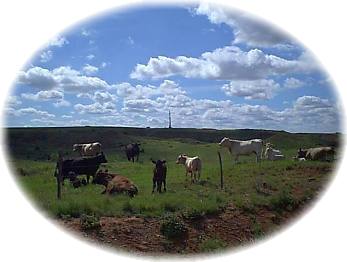
Chouteau's Island was the largest island of timber on the Arkansas River in this area. In the spring of 1816, Auguste Pierre Chouteau was returning to Missouri with several other fur trappers when they were attacked by a large party of Pawnee Indians. Chouteau's party saw the Indians in time to cross over the shallow water to the island. From there they were able to repulse the Indian attack and make their escape.
In 1825, Joseph C. Brown, a U.S. engineer, surveyed the Santa Fe Trail. He designated Chouteau's Island as the point for turning south to join the Cimarron Cut-Off at Wagon Bed Springs, some ten miles south of the present day Ulysses.
